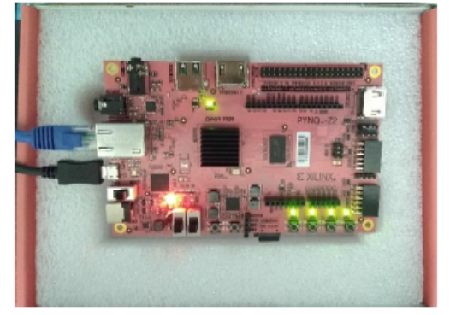


Indian Journal of Science and Technology
Year: 2023, Volume: 16, Issue: 30, Pages: 2341-2349
Original Article
Mayur M Sevak1*, Tanmay D Pawar2
1Research Scholar, Gujarat Technological University, India
2Professor & Head, Electronics Engineering Department, Birla Vishvakarma Mahavidyalaya, India
*Corresponding Author
Email: [email protected]
Received Date:20 April 2023, Accepted Date:06 July 2023, Published Date:12 August 2023
Background/Objectives: The primary purpose of this research is to investigate the feasibility and effectiveness of Singular Value Decomposition for compressing wirelessly collected ECG signals using a Bio Radio device and to show its implementation on a PYNQ-Z2 platform. Methods: This study includes 20000, 80000, and 270000 ECG samples from different people having different ages. The Bio Radio device with an ECG lead-1 and lead-2 configuration was used to collect ECG data from various persons aged of 22,23,24,35,37,49. Singular Value Decomposition has been used to compress all ECG data on the PYNQ-Z2 FPGA, which offers a Python programming environment. Here, To analyze the result of compression various parameters like compression ratio, percent root mean square difference, and percent root mean square residual energy were calculated. Findings: In the matrix-based SVD technique, the signal is divided into many fundamental patterns and scaling factors. The most intriguing aspect of SVD is that only a small number of unique values may effectively preserve the majority of the signal’s information. Here, we used a Bio Radio device to capture ECG signals at a sampling rate of 1 K S/s. After applying SVD to these data, we were able to reconstruct signals with sample sizes of 20000, 80000, and 270000. The highest compression ratio we were able to obtain was 35.6506, while the lowest PRD (%) was 0.00812, the same as the PRRE (%) for 20000 samples. For 80000 samples, we were able to reach a maximum compression ratio of 108.108 with a minimum PRD (%) of 0.0012, the same as the PRRE (%) of 1.3077. For 270000 samples, we achieved a maximum compression ratio of 228.8136 with a minimum PRD (%) of 0.0437, the same as PRRE (%). The highest value of QS is 1076.42 for lead 1 and 1721.76 for lead 2 for singular values q=70 and the sample size is of 80000. Novelty: Bio Radio utilizes Bluetooth for capturing biomedical signals that make user easy for doing any activity wirelessly in proximity to it. Pynq-Z2 provides Python programming which is quite an innovative platform for algorithm deployment on hardware.
Bio RaKeywords:dio; SCA; PynqZ2; PS; PL; CR; PRD; PRRE; QS
© 2023 Sevak & Pawar. This is an open-access article distributed under the terms of the Creative Commons Attribution License, which permits unrestricted use, distribution, and reproduction in any medium, provided the original author and source are credited. Published By Indian Society for Education and Environment (iSee)
Subscribe now for latest articles and news.